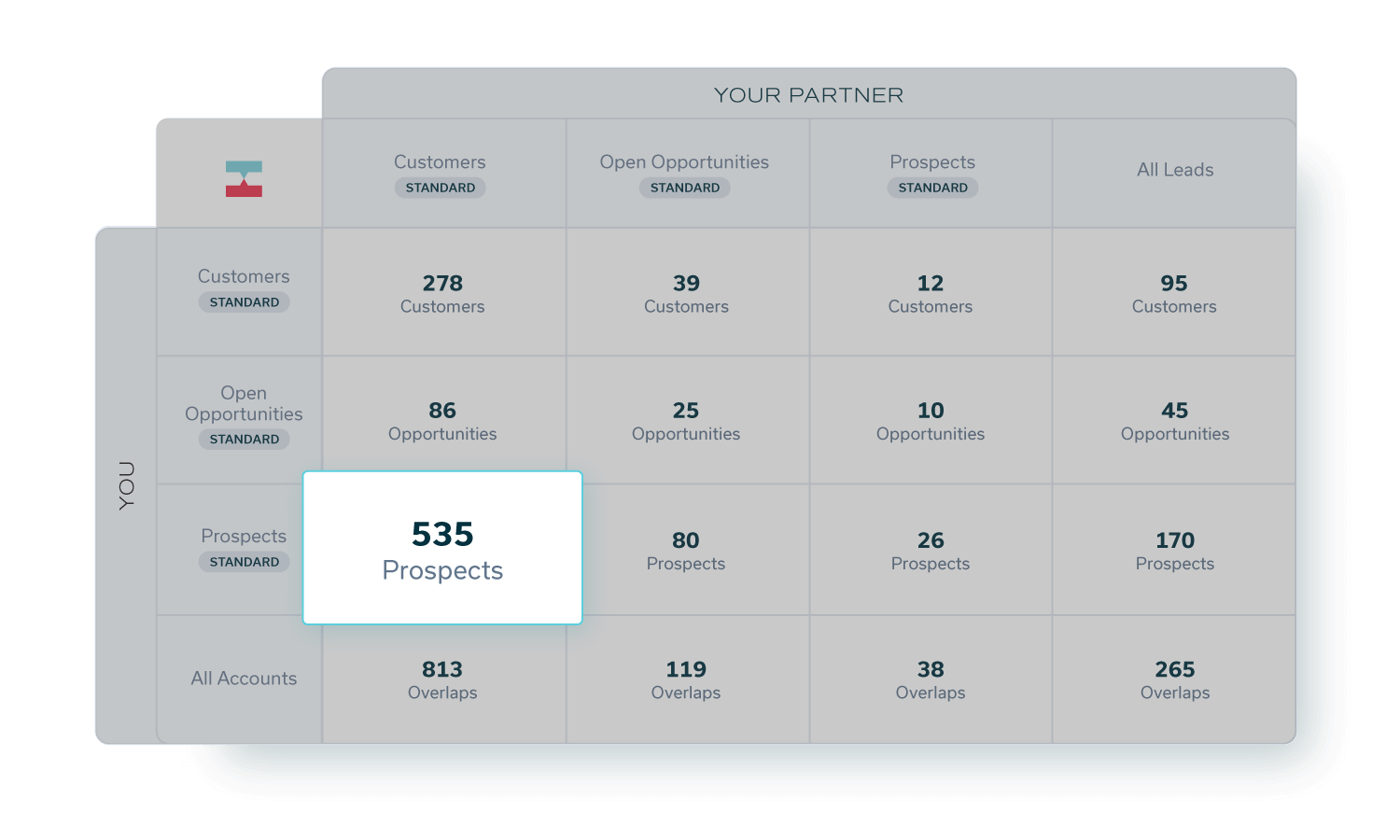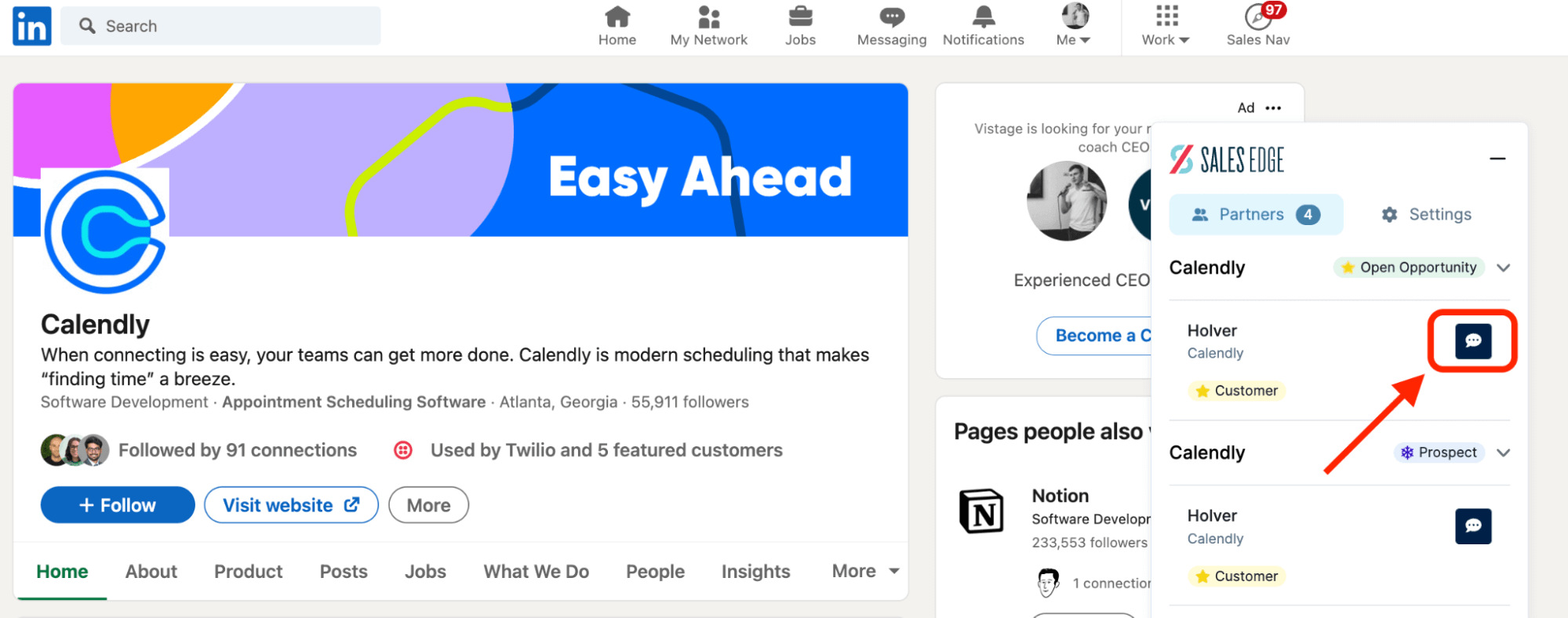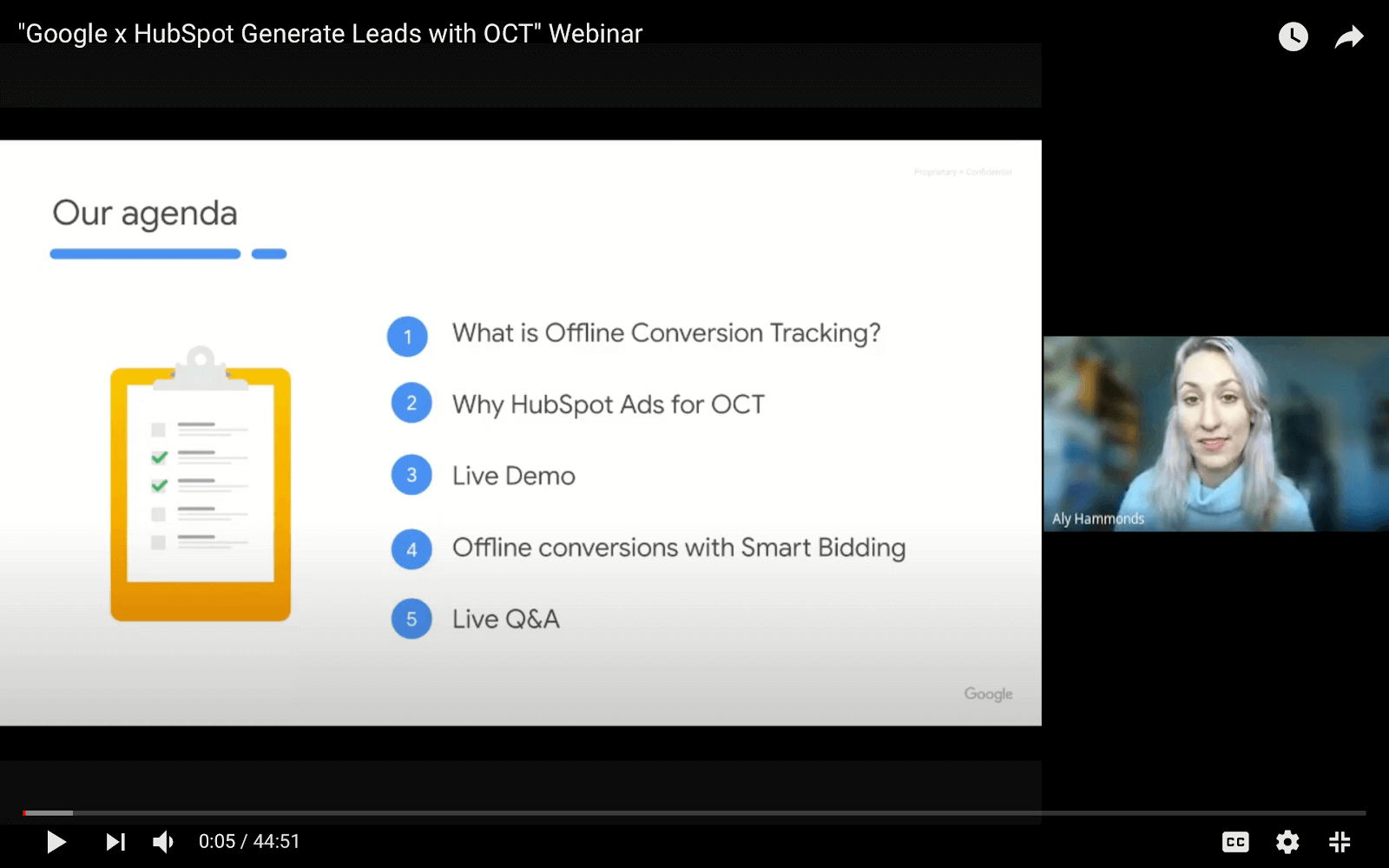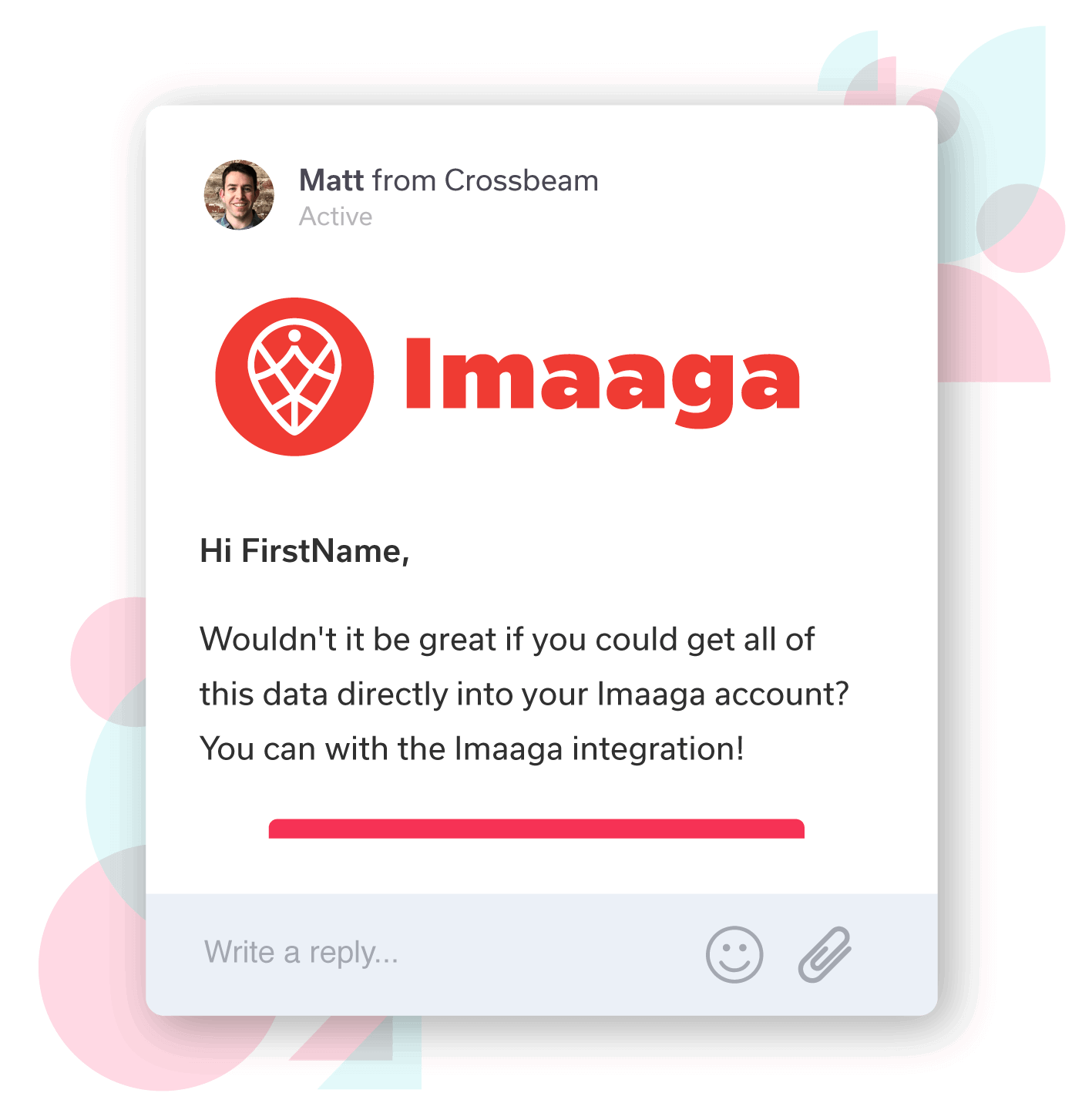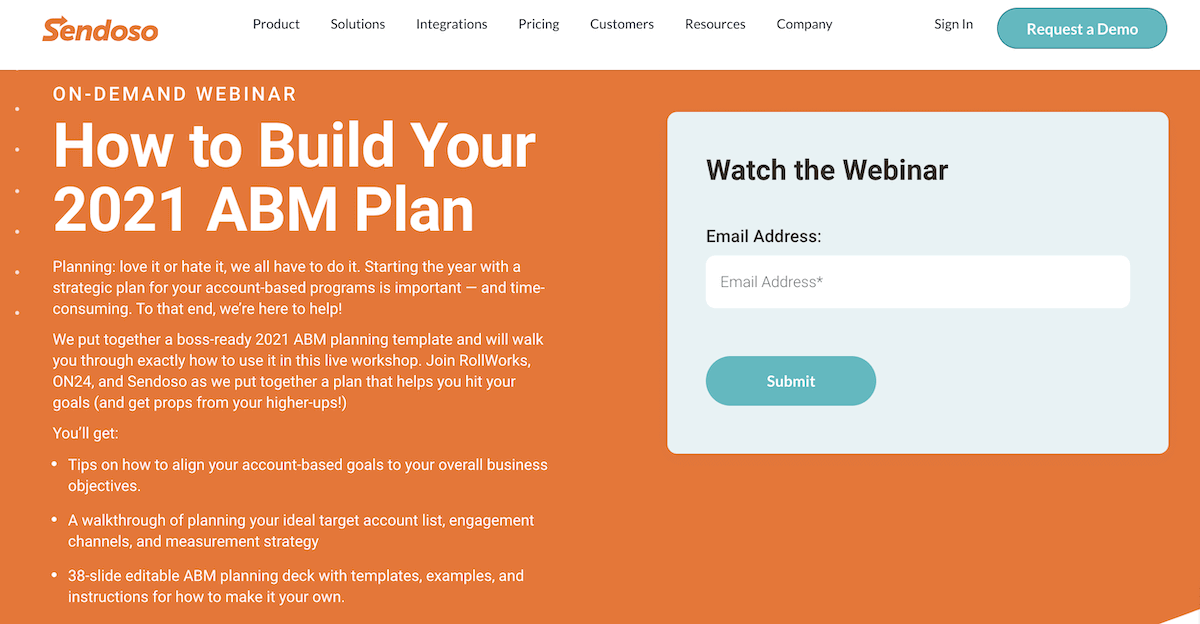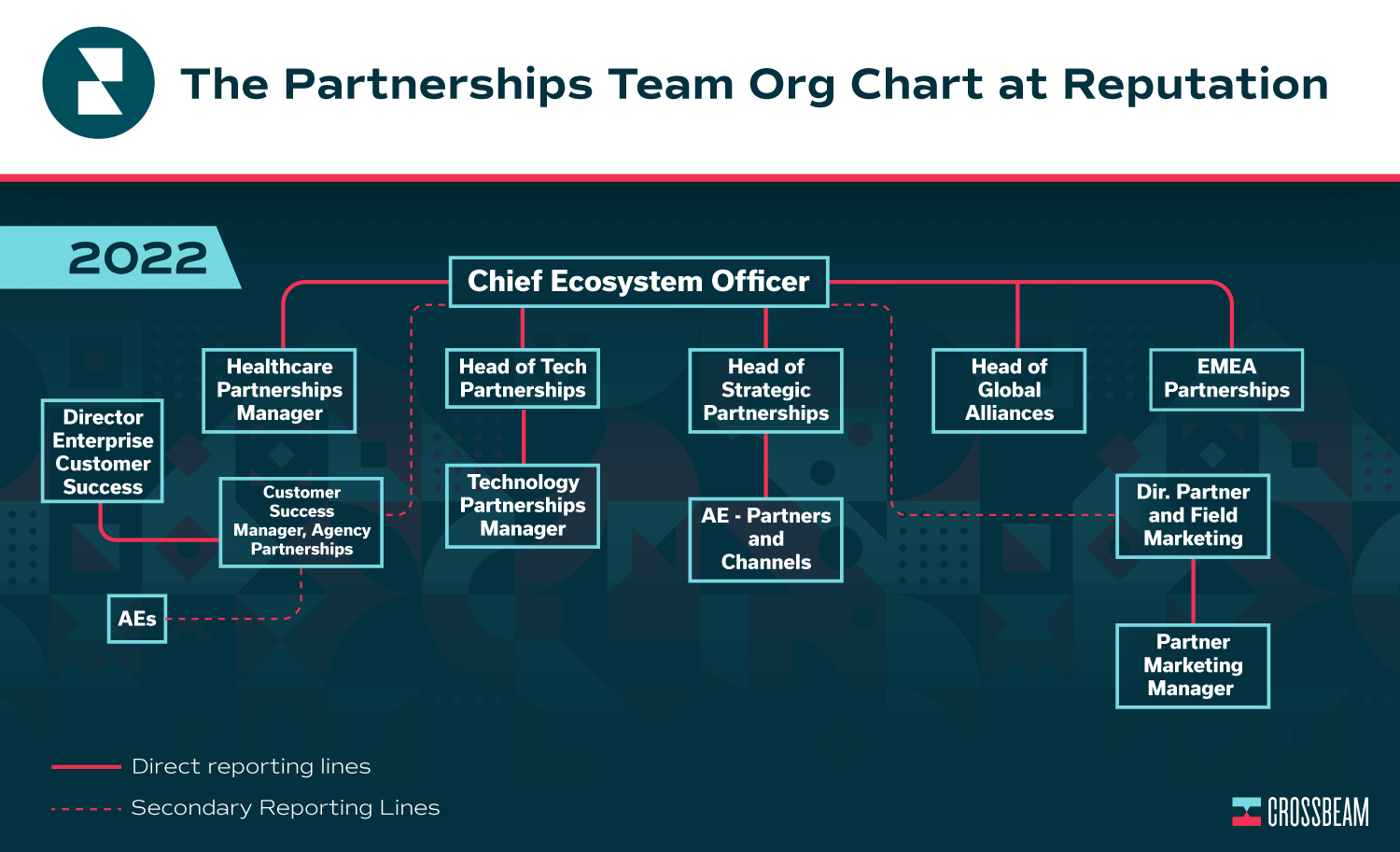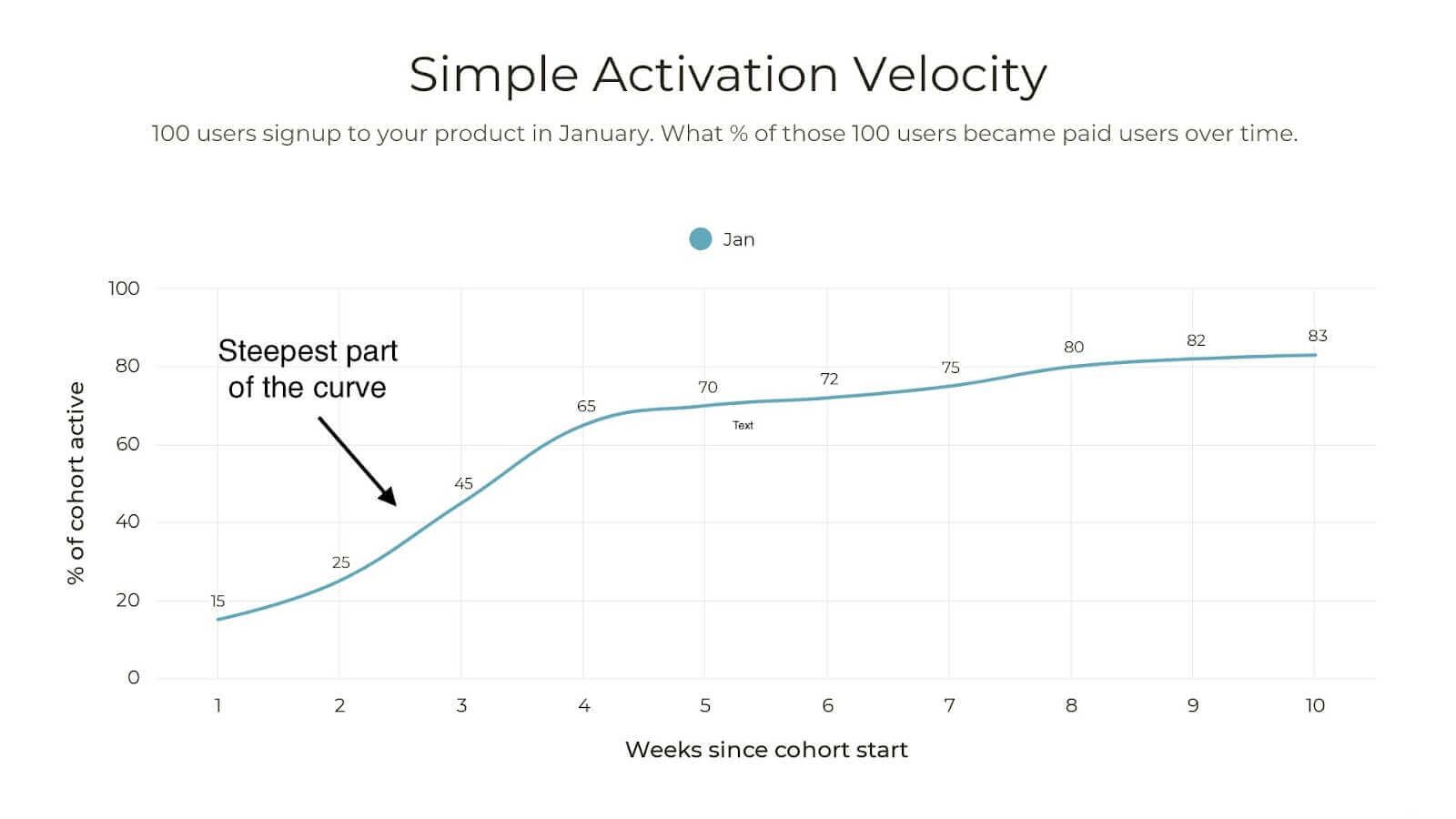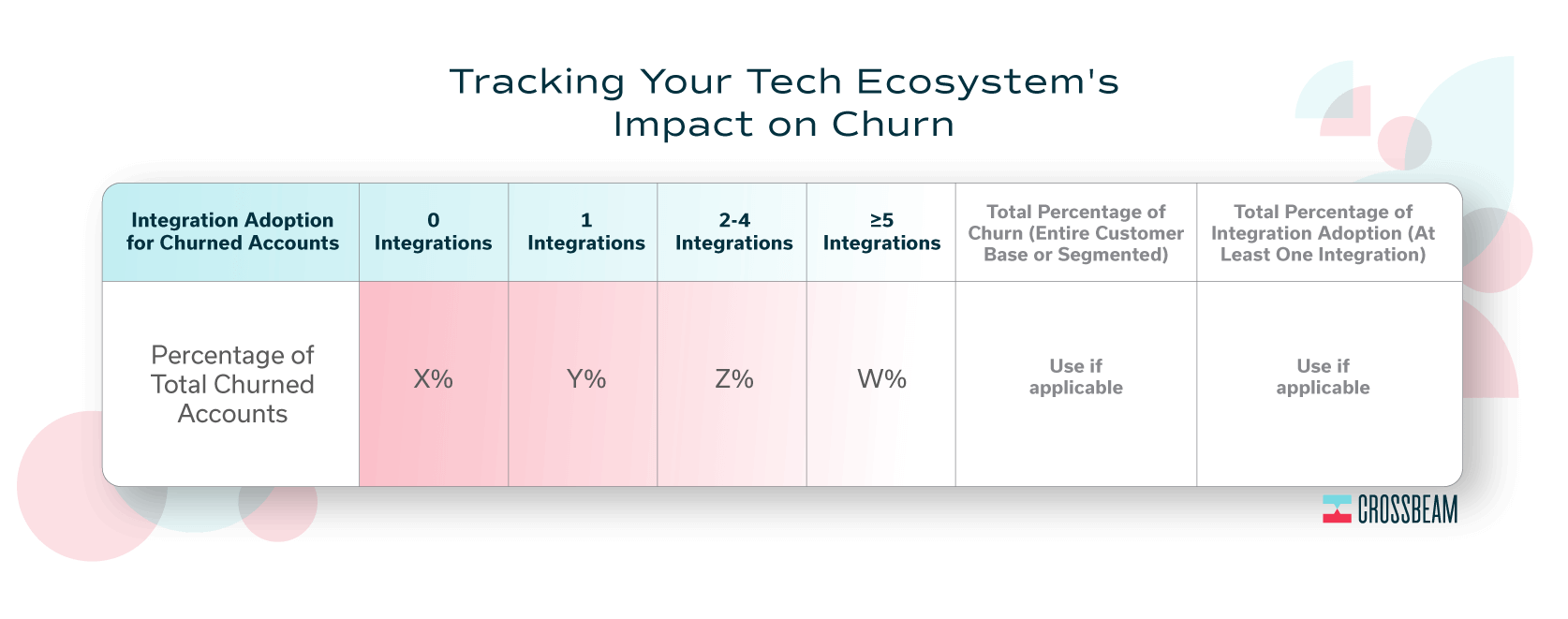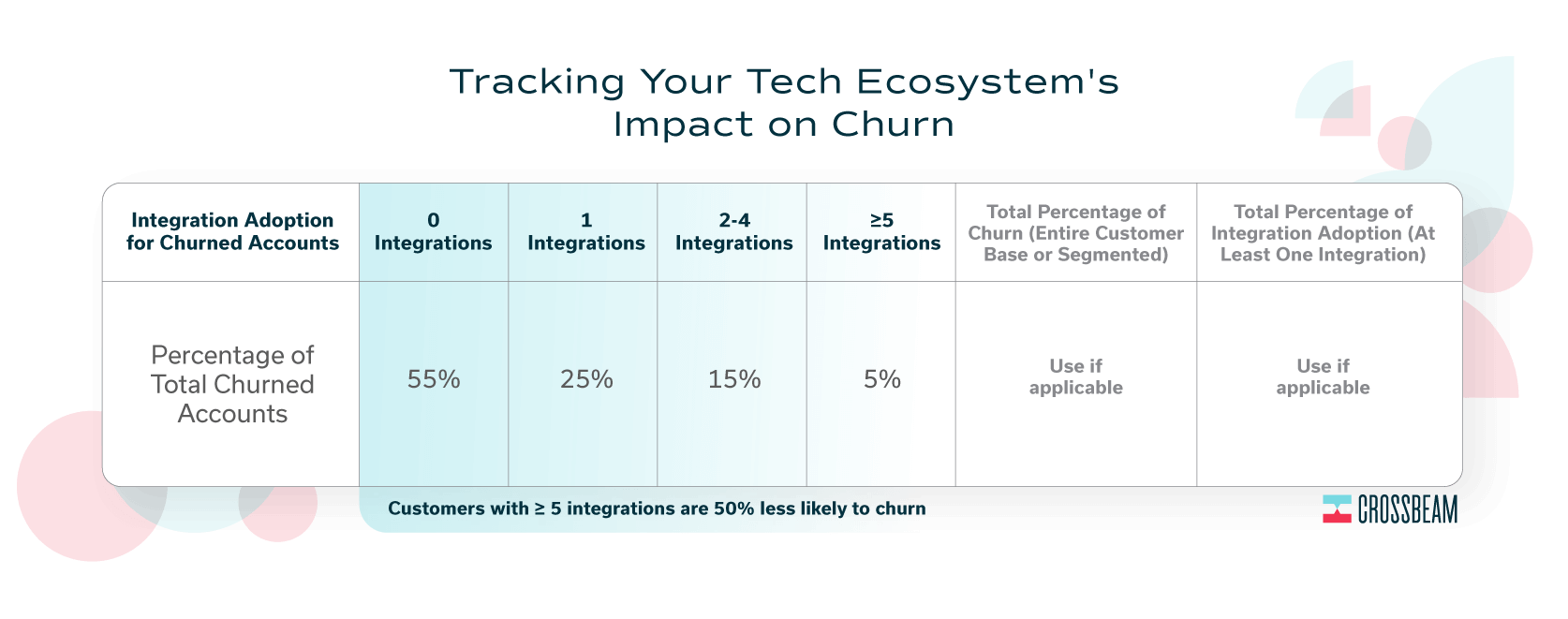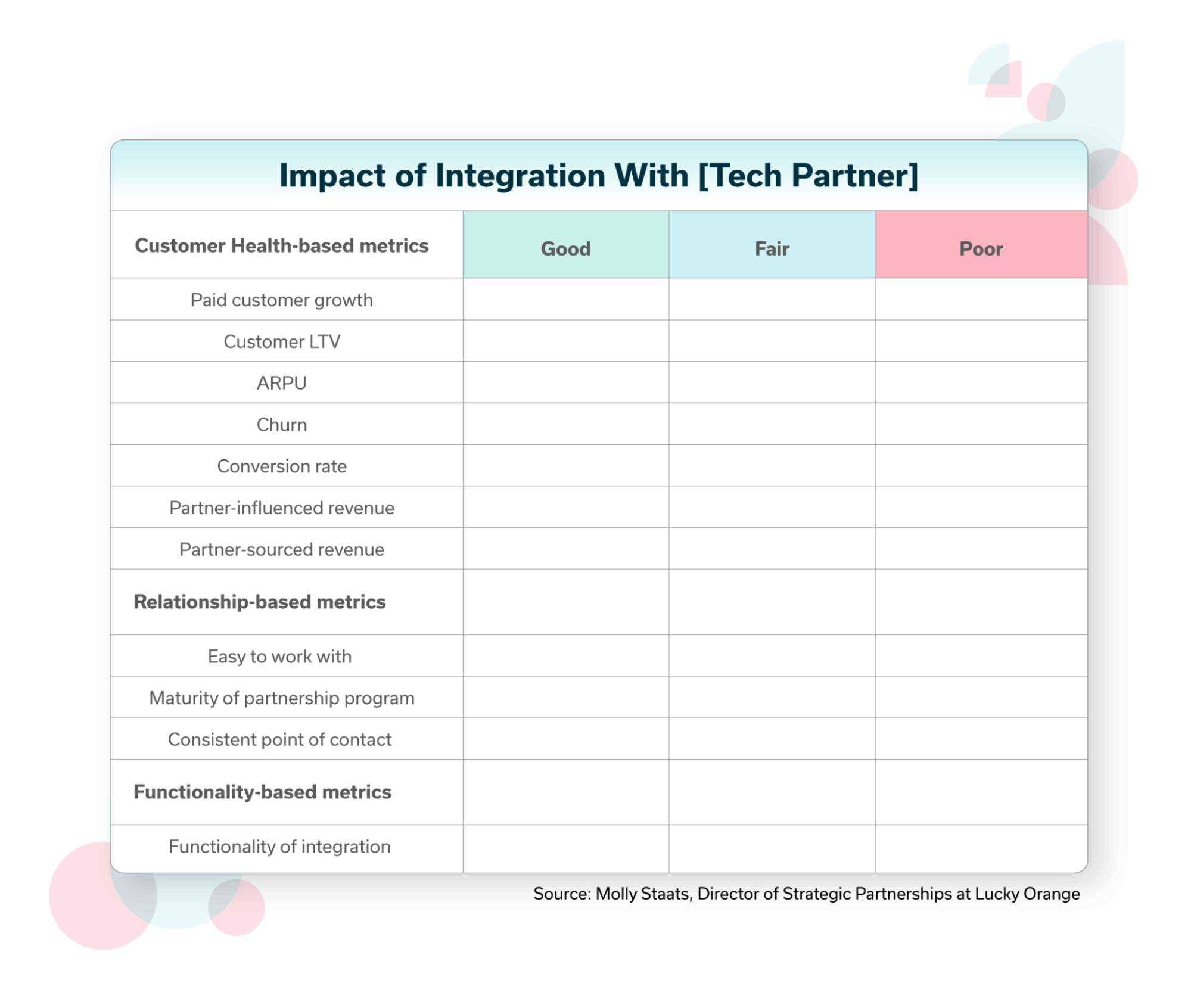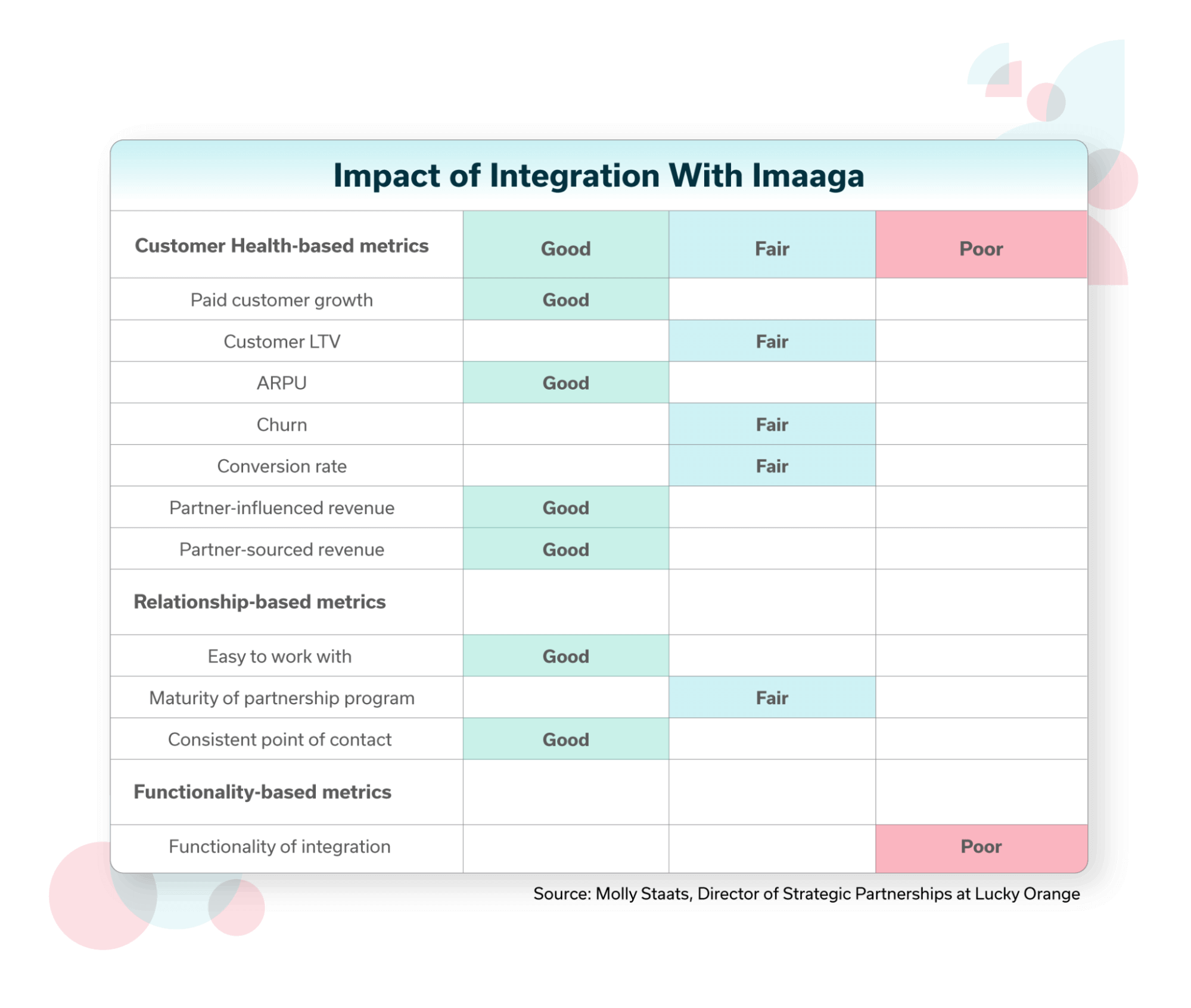Get the latest Ecosystem-Led Growth insights, GTM plays, and industry data — delivered to your inbox weekly. Subscribe to Crossbeam Insider.
There’s more than one reason B2B SaaS companies are prioritizing ecosystem-led growth.
There’s the hard data that shows the effectiveness of launching your go-to-market (GTM) motions with partners over traditional and siloed efforts (like how Census boosted its annual contract values (ACV) by 34% when using partner data from Crossbeam, or how RingCentral upsells 3x as frequently with partners than without).
There’s the need for teams to seek high-impact growth channels like partnerships during times of uncertainty while minimizing resource-intensive, internal efforts that have limited exposure to new audiences. CEOs of trillion-dollar companies like Microsoft attribute the vast majority of their revenue to partners (95% in Microsoft’s case) and have committed to evaluating each major internal business change through the lens of its potential impact on partnerships.
And there’s the evolution of remote work and online consumption habits, the phasing out of third-party data, and the desire to learn about new products from a trusted advisor or influencer — not from cold calls.
If you’re not leveraging ecosystem-led growth, start now.
Otherwise, you’ll lose out to your biggest competitor — the status quo. And, eventually, you’ll have to play catch-up.
In this article, we’ll cover:
- What is Ecosystem-Led Growth?
- The benefits of Ecosystem-Led Growth
- How B2B SaaS companies are accelerating sales and entry into new markets
- Measuring Ecosystem-Led Growth
What is Ecosystem-Led Growth?
Ecosystem-led growth (ELG) is accelerating customer acquisition, account expansion, and access to new markets by improving go-to-market (GTM) motions via partners and partner data.
For example, understanding that your prospect is a customer of your partner can help you:
- Break into the account faster via a warm intro from your partner and get valuable context about the prospect from your partner to shape the most compelling sales conversation
- Identify exactly how to invest your efforts in joint webinars and co-marketing deliverables that are likely to encourage the prospect to choose your product over your competitor’s/the status quo
- Prioritize developing an integration that the prospect and similar customers would use, making your product an integral part of their tech stack and influencing upsells and expansions
- Know exactly which integrations or partner case studies to cover with your prospect during onboarding to help them realize value in your product quickly
Similar to product-led growth, ecosystem-led growth puts the customer in full focus with the mission of understanding their business needs through direct customer feedback and through partners, investing in the integrations and services that provide them with the most value, and using partner data to inform your org-wide strategy.
Let’s look at the impact ecosystem-led growth has on individual GTM teams:
Sales
In sales, your sales development representatives (SDRs) lean on partners for warm intros, and your account executives (AEs) sell with and through your partners to close deals. If you do not have a sales team yet, the person responsible for selling your product will work with partners to acquire and retain customers.
For example: Highspot has observed that partners contribute 58% of the revenue generated by their top sales reps, and working with partners influences a 60% larger deal size.
Additionally, Ella Monarch, Business Development Manager (BDM) at Ryder, always brings a partner onto her second sales call with a prospect. The partner serves as a subject matter expert (SME) who can show the value of Ryder’s solution and the joint solution with the partner and can build credibility with the prospect. As a result of her process, 18% of her sales pipeline comprises partner-sourced leads.
Video: Chelsea Graham, Partner Revenue Executive at
Highspot, speaking about how their top sales reps close deals with partners at Supernode, the conference for ecosystem-led companies
Using Sales Edge, a network-based co-selling solution in Crossbeam, sales teams identify which partners are likely to have the most influence on a deal. Sales Edge pushes partner data into the tools your SDRs and AEs use every day — like Salesforce, LinkedIn, and weekly emails — making co-selling with partners a natural part of the sales process.
Marketing
In marketing, the person or team responsible for marketing will work with partners to generate ecosystem qualified leads (EQLs) through co-hosting events and webinars, launching long-term co-marketing campaigns, and aligning your brand with your partners’ via website collateral and more.
For example: HubSpot and Google’s GTM strategy for their Ads Optimization Events tool included joint blog posts, webinars, enablement resources for their internal sales and CS teams, and alignment between their GTM teams throughout the months-long campaign. As a result, they led a 232% increase in feature adoption
just five months post launch.
Product
In Product, your product usage and customer feedback can help to inform the types of integrations you invest in. Additionally, your integration adoption and usage can help your product team understand where to invest their time and resources in product development, feature launches, integration adoption and fixing bugs.
You can use your product to send custom in-app messages that promote the types of integrations your customers are most likely to adopt, and then you can use your integration adoption metrics to inform your product roadmap.
Additionally, integration adoption can help improve product usage and customer health. By combining partner data with other data sources, like customer health scores, you can recommend the integrations most relevant to your customers’ tech stacks in order to help them get more value out of your product, increase the number of users they have in the product, and boost their overall product usage.
For example: Bynder’s team developed its Digital Asset Transformation (DAT) feature with an open API for integrating with Salesforce. This helped the digital asset management (DAM) product expand into the content delivery space and access larger enterprise customers. Due to this success, the product and partnerships team continue to consult one another before launching new features/integrations. At Bynder, partnerships influence the product and feature roadmap.
For more on how to use partner data to inform your product and overall GTM strategy, watch:
Onboarding & customer success
In onboarding and customer success, your channel and tech partners can help shorten your new customers’ time-to-value (TTV) and help them activate faster. The earlier your customers see value in your product, the less likely they are to churn. Co-onboarding with partners is key.
For example: RollWorks’s onboarding customer success team uses partner data from Crossbeam to identify which integrations would provide the most value for their new customers right away. This process has helped RollWorks see a 16% faster TTFV in a two-quarter period, a 17% increase in customers adopting at least one additional integration, and a 7% boost in integration usage.
Why does this matter? RollWorks knows that customers who have adopted at least one additional integration on top of a CRM integration renew at a rate 30% higher. By driving integration adoption during the customer onboarding process, they’re directly impacting retention and annual recurring revenue (ARR).
Additionally, when RollWorks onboards a new customer, they ask their tech partner Sendoso to help educate the customer about the joint value of their integration and relevant use cases.
How B2B SaaS companies are accelerating sales and entry into new markets
A consistent partner-generated pipeline is a strong indicator of a startup’s revenue growth potential, says Sarah Wang, Managing Partner at Andreessen Horowitz. Venture Capital (VC) firms are more likely to bet on companies that place value on the ecosystem and prioritize co-selling with partners over direct sales.
Video: Sarah Wang, Managing Partner at Andreessen Horowitz, speaking on the importance of ecosystems at Supernode, a conference for ecosystem-led companies.
Some companies are making big shifts to restructure their org and prioritize ecosystem-led growth. Reputation, an experience management platform with more than 500 employees, hired a Chief Ecosystem Officer to oversee their partner programs and to ensure an org-wide investment in partnerships.
Meanwhile, Skylark, a video-first content management system (CMS) with less than 10 employees, is leaning on its tech and agency partners as its primary growth strategy for breaking into new accounts and expanding its ideal customer profile.
When Managing Director, Justin Fyles, joined Skylark, he pitched the strategy of ecosystem-led growth to its board of directors. At the time, Fyles and his team were leading Skylark through a relaunch involving the removal of its in-house services and the shift towards functioning as a best-in-breed, B2B SaaS product.
Although Fyles was more familiar with direct sales, his gut told him to lean on the ecosystem to acquire new customers at scale who were already working with agencies to solve their business needs. For example: partnering with global system integrator (GSI) Accenture enables Skylark’s team to get warm intros into Fortune Global 100 and 500 clients, while partnering with agencies like FX Digital UK offers them a strong foothold in the UK market and a global reach.
Since adopting ecosystem-led growth, Skylark has:
- Expanded its ICP to include customer segments they wouldn’t have been able to access alone
- Generated same-day intros into prospect accounts they had trouble breaking into previously
- Received positive feedback from the board
As an early stage startup, Skylark is generating ecosystem-qualified leads (EQLs) and shortening its sales cycles — all without an internal sales or marketing team. When Skylark does hire a sales team, co-selling with partners will be the foundational sales motion that their sales reps will adopt right away.
Compare this to the notion that many partnership professionals must spend their first months re-educating and enabling their sales teams to work with partners. For example: Ashley Scorpio spent her first 90 days at agency Hawke Media building face time with her sales and marketing team and helping them understand the value of partnerships. As a result of Scorpio’s efforts, Hawke Media attributed 40% of its revenue to partnerships.
The more you can embed partnerships into your GTM motions, the closer you’ll be to multiplying your revenue channels and maximizing their outputs.
Below are two more examples of B2B SaaS companies weaving ecosystem-led growth into their existing processes:
- Bynder shook up its partner program by redefining its positioning on integrations. This made it easier for them to communicate the value of their integrations to their internal teams, helped their sales team set accurate expectations with prospects and direct them to the right internal stakeholders for potential integration development, and led them to investing in a strategic integration with Salesforce that helped them expand into a new product category.
- RingCentral’s Vertical Sales and Solutions Engineering teams help to vet potential new integrations while speaking with prospects and customers. Each team helps to oversee these bespoke integrations to launch and then supports the partnerships team in determining if there’s a more universal use case for expanding the integration to a wider audience. This process helps RingCentral meet the needs of customers in specific verticals while also identifying opportunities to meet their customers’ needs at scale.
The benefits of Ecosystem-Led Growth
Below, we’ll cover four more benefits of adopting ecosystem-led growth.
You don’t need to say goodbye to product-led growth
Product-led growth and ecosystem-led growth work hand-in-hand. Similar to product-led growth, customer value is the top priority for ecosystem-led growth. It’s impossible to scale if your customers are churning, and your partners provide a
scalable means of educating your customers and helping them to achieve value.
Additionally, your partners can help to boost your referrals at scale to drive more users to your product, convert them into customers, and help them become advocates who in turn will drive more referrals to your product. The more you invest in improving your product, features, and tech ecosystem, the better your customer lifetime value (LTV) will be.
You can skip ahead in the sales conversation
Direct sales tactics aren’t enough. If your sales team hasn’t adopted
ecosystem-led sales, they’re exerting a high level of effort for low-impact results. 74% of business buyers conduct the majority of their tech stack research online before talking to a sales rep — making G2 reviews, LinkedIn conversations, tech marketplaces, and word-of-mouth more powerful than a cold call.
Additionally, most salespeople say that only 50% or less of their prospects are a good fit for their product (among other sales pain points). Your partners can generate high-quality leads to help your sales reps grow their pipeline and improve their win-rates. Sales teams that work with partners can skip ahead in the sales conversation in the following ways:
- They can get same-day intros into their prospects (like Freshworks and Skylark does), rather than making cold calls and sending outreach sequences (Prospects don’t open approximately one third of cold emails).
- They can get included in their system integrator (SI) partners’ request for proposals (RFPs), eliminating the need for your sales team to convince prospects that your product is valuable (Allocadia ensures their partners complete activities that shorten the sales cycle, like including them in RFPs).
- They can get alerts when your prospect purchases your partner’s software and use it as a signal that now is the right time to engage your prospect in the sales conversation. For example: Census gets alerts from their partner ecosystem platform (PEP) Crossbeam letting them know whenever their prospects become customers of their tech partners. Then, they immediately send an email to the prospect about the value of their integration with the tech partner. This has helped them boost their annual contract values (ACVs) by 34%! By implementing this tactic, your sales team doesn’t need to guess if their prospect is ready to buy — they’ll have data that tells them when the timing is right and talking points about your joint value to help them make the sale.
Your value becomes much greater than your product
By aligning your product and/or services with strategic partners, your offering becomes a non-negotiable for your mutual customers. Your customers are more likely to continue using your product if it works well with other tools in their tech stacks and if they achieve great results with the help of your agency partners.
You can scale with your customers
The more you invest in your tech ecosystem, the easier it is for your customers to use your product with any variety of tools as they scale. If your product integrates with an all-in-one marketing automation platform for mid-size businesses
and a best-in-breed marketing automation platform for enterprise businesses, a maturing customer can use your product as they grow and expand their tech stack. For example: Help Scout invests in its tech ecosystem so that customers through its startup partner program can use Help Scout with a variety of tools as their tech stack matures.
You don’t need to play catch-up
Partnership leaders often have to prove the value of partnerships before they’re able to get buy-in for hiring partnership-focused roles like developers dedicated to building integrations, customers success (CS) or sales reps who prioritize working with partners, or even a Chief Ecosystem Officer (the other “CEO”). But if you bake partnerships and Ecosystem Ops into your GTM strategy from the start, you’ll benefit by getting a head start on generating bigger deal sizes, shorter sales cycles, and access to new markets.
For example: SugarCRM accessed a network of 15,000 customers in the Middle East by partnering with Redington Gulf, and Reviews.io added at least 20% more clients in the DACH region by partnering with local agencies. The process of expanding to these regions would have been much more difficult without the help of partners. Additionally, your product will become an integral part of your customers’ tech stacks earlier, building advocacy and multiplying your customer referrals over time.
Measuring Ecosystem-Led Growth
Below are a handful of the metrics you should keep in mind for measuring ecosystem-led growth:
Time-to-value or activation velocity
Time-to-value measures the amount of time a new user takes to realize value using your product.
Activation velocity measures user activation on a curve to illuminate how cohorts of users activate over time.
By understanding which cohorts activate most successfully and when, you can identify activities for promoting activation and roll them out during times when your users tend to be most receptive to interaction with your onboarding materials, team, and partners.
For example: If you know that
enablement sessions after week two have little to no effect on your users, your CSMs can double down on their efforts prior to week two and pull in your agency partners to help educate your
new customers during that time.
Length of the sales cycle
Compare the length of your sales cycle when co-selling with or through partners to the length of the sales cycle when no partners are involved. How do specific partners or types of partners help shorten your sales cycles?
Freshworks has observed a 50% faster time to close when swapping same-day intros with their partners, and Sendoso has closed deals 28 days faster when co-selling with partners. Everflow used partner data to shave four months off of their sales cycles. Keep in mind: You will need to invest in a co-selling process and iterate on your process over time in order to enable your internal sales/CS team and your partner’s sales/CS team to work together effectively.
Customer lifetime value (LTV)
- How does the total revenue you generate from a customer increase with the help of partners?
- Do your tech or channel partners influence bigger deal sizes?
- Are your integrations and agency partners improving your upsell rates and account expansions?
- Are specific segments of customers more likely to grow their accounts with you with the help of partners?
- How can you use this information to increase or decrease spending for their acquisition?
Annual contract value (ACV)
Census observed a 34% increase in ACV when partners were involved in a deal.
- How do your partner-influenced and partner-sourced deals bring in more revenue than non-influenced deals?
- Do specific integrations or channel partners help increase your deal sizes?
Customer health
- How does the number of
integrations your customers have adopted impact customer health? - How does the number of
integrations your customers use and the types of integrations they use impact the time they’re spending in your product, the amount of users they have using your product, and their usage of critical features in your product?
Renewal rates and likelihood to churn
Are your customers less likely to churn when they’ve adopted a minimum number of
integrations, or when they’ve adopted a particular integration? Calculate your tech ecosystem’s impact on churn as well as the impact that individual integrations have on churn.
By understanding their tech ecosystem’s impact on churn, Freshworks made the case for integration adoption to become a key metric for their customer success team, and their CSMs led a 30% increase in integration adoption in one year.
By measuring the impact of individual integrations on churn and other metrics, Lucky Orange made the case for hiring a developer focusing on building and maintaining integrations and made integrations a critical piece of every six-week development cycle.
Additional metrics for consideration: The 7 metrics that prove the business impact of your tech integrations.
–
Real-time account mapping in Crossbeam will help you identify where to invest in your partnerships strategy and how to start practicing ecosystem-led growth. Using partner data, you’ll be able to:
- Identify partnership opportunities with the highest impact
- Know exactly when to engage your prospects in the sales conversation and which partners can help push the deal across the finish line
- Know where to invest your product, CS, sales, and marketing team’s time and resources in order to acquire new customers, drive value for existing customers, and build advocacy that multiplies your user network
Invite your partners onto Crossbeam to uncover overlaps among your prospects, opportunities, and customers, and browse our account mapping e-book below to start generating results in minutes.


